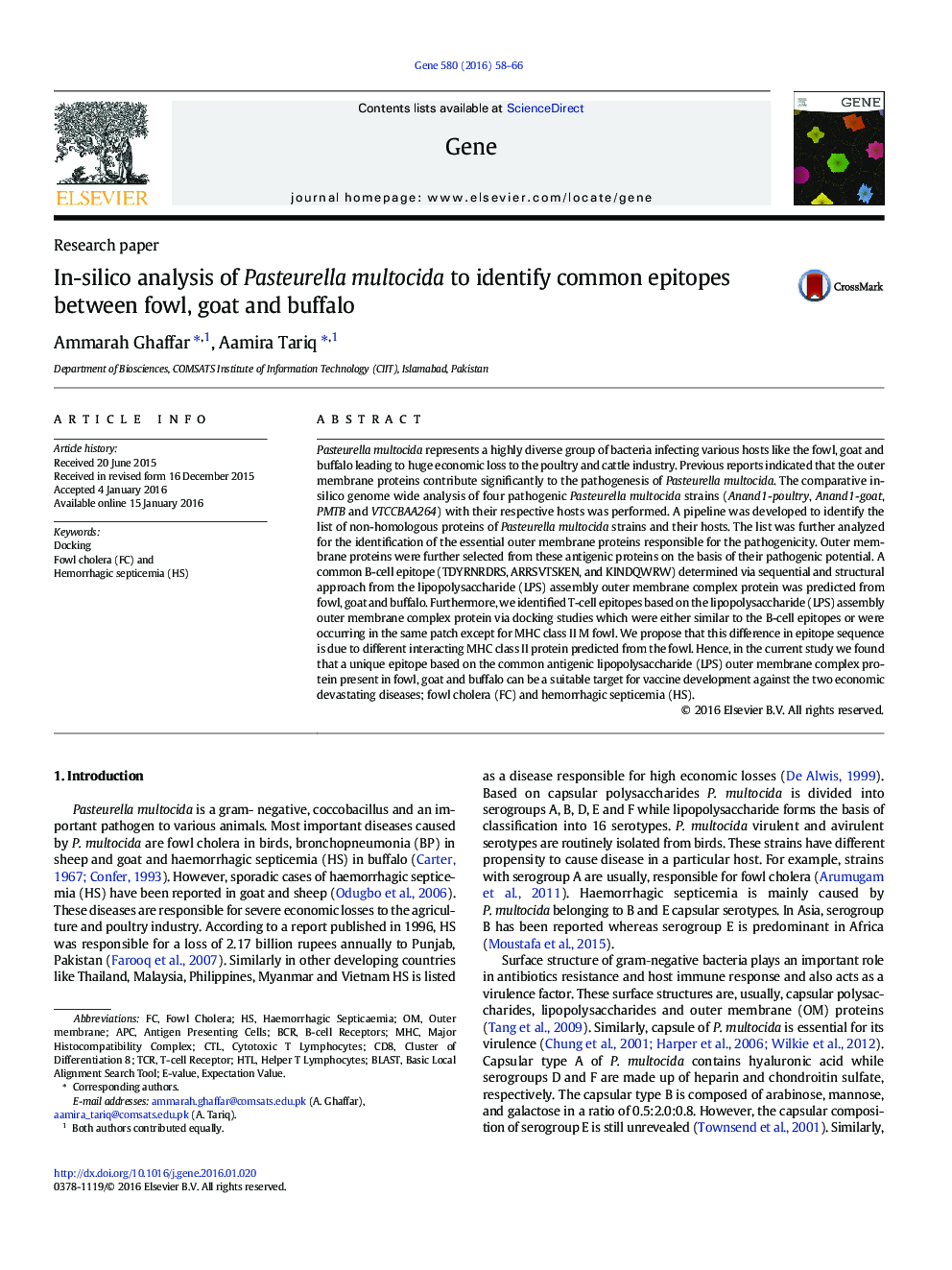| کد مقاله | کد نشریه | سال انتشار | مقاله انگلیسی | نسخه تمام متن |
|---|---|---|---|---|
| 2815147 | 1159853 | 2016 | 9 صفحه PDF | دانلود رایگان |

• This paper is based on in-silico epitope prediction against Pasteurella multocida strains.
• Fowl cholera and hemorrhagic septicemia caused by this strain are causing a huge loss to poultry and livestock industry.
• The bioinformatics analysis yielded a unique B and T cell epitope from three different Pasteurella multocida strains.
• This epitope can lead to effective vaccine development.
Pasteurella multocida represents a highly diverse group of bacteria infecting various hosts like the fowl, goat and buffalo leading to huge economic loss to the poultry and cattle industry. Previous reports indicated that the outer membrane proteins contribute significantly to the pathogenesis of Pasteurella multocida. The comparative in-silico genome wide analysis of four pathogenic Pasteurella multocida strains (Anand1-poultry, Anand1-goat, PMTB and VTCCBAA264) with their respective hosts was performed. A pipeline was developed to identify the list of non-homologous proteins of Pasteurella multocida strains and their hosts. The list was further analyzed for the identification of the essential outer membrane proteins responsible for the pathogenicity. Outer membrane proteins were further selected from these antigenic proteins on the basis of their pathogenic potential. A common B-cell epitope (TDYRNRDRS, ARRSVTSKEN, and KINDQWRW) determined via sequential and structural approach from the lipopolysaccharide (LPS) assembly outer membrane complex protein was predicted from fowl, goat and buffalo. Furthermore, we identified T-cell epitopes based on the lipopolysaccharide (LPS) assembly outer membrane complex protein via docking studies which were either similar to the B-cell epitopes or were occurring in the same patch except for MHC class II M fowl. We propose that this difference in epitope sequence is due to different interacting MHC class II protein predicted from the fowl. Hence, in the current study we found that a unique epitope based on the common antigenic lipopolysaccharide (LPS) outer membrane complex protein present in fowl, goat and buffalo can be a suitable target for vaccine development against the two economic devastating diseases; fowl cholera (FC) and hemorrhagic septicemia (HS).
Journal: Gene - Volume 580, Issue 1, 10 April 2016, Pages 58–66